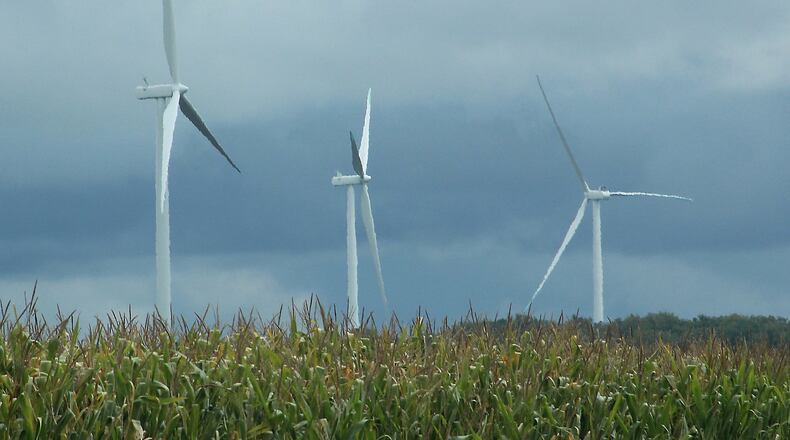RELATED: Champaign County wind farm now wants 50 turbines, half of initial plan
But a group of Champaign County residents who oppose the wind farms argue that any extension of the certificates would count as changing the initial project and require that the approval process start over.
Attorneys for Everpower, the developer of the wind farm, recently argued the extension is necessary because an earlier group of opponents tied the project up in a years-long legal fight. Everpower is in the process of negotiating a sale of the the Champaign County project and others to innogy, a German energy company.
The Champaign County projects were among the earliest approved in the state, before lawmakers imposed tougher requirements for how far turbines in more recent projects should be from neighboring properties.
MORE: Lawmaker: Current wind farm regulations ‘stifle’ investment in Ohio
In documents filed with the OPSB, the residents raise concern over issues like noise produced by the turbines, and argue their interests will be better protected if the developers have to restart the application process. In that case, the tougher setback requirements would apply to the project.
The latest setbacks require that turbines be at least 1,125 feet from an adjacent property line, but some turbines in the Champaign County wind farms would be as close as 541 feet, the residents argue.
DETAILS: Champaign wind farm may move forward after nearly decade-long fight
“They have a real and substantial interest in attempting to prevent the infliction of additional adverse impacts on their land, residences, communities and lives that the combined facility is projected to create,” opponents said in the latest filing.
“Moreover, the infliction of these adverse impacts would be greatly reduced by the application and enforcement of the current setback requirements … to the combined project.”
READ MORE: Everpower signs deal with Amazon for Ohio wind farm
The project’s latest opponents also argued they have a right to intervene in the case and rejected the idea that litigation was the sole reason construction has not yet begun on the combined wind farm.
Instead, they argued the developers have sought numerous changes to the project since the certificates were initially issued.
“Given that the bulk of any ‘delay’ in the commencement of construction on these projects is largely due to applicants’ own conduct the local residents maintain that applicants have failed to show good cause for the requested extensions,” opponents argued.
A project schedule filed by the developers shows final designs for the wind farm could be completed as soon as the third quarter of this year. Both phases of the project could be operational by the end of next year if the project moves forward.
About the Author
